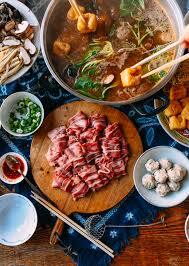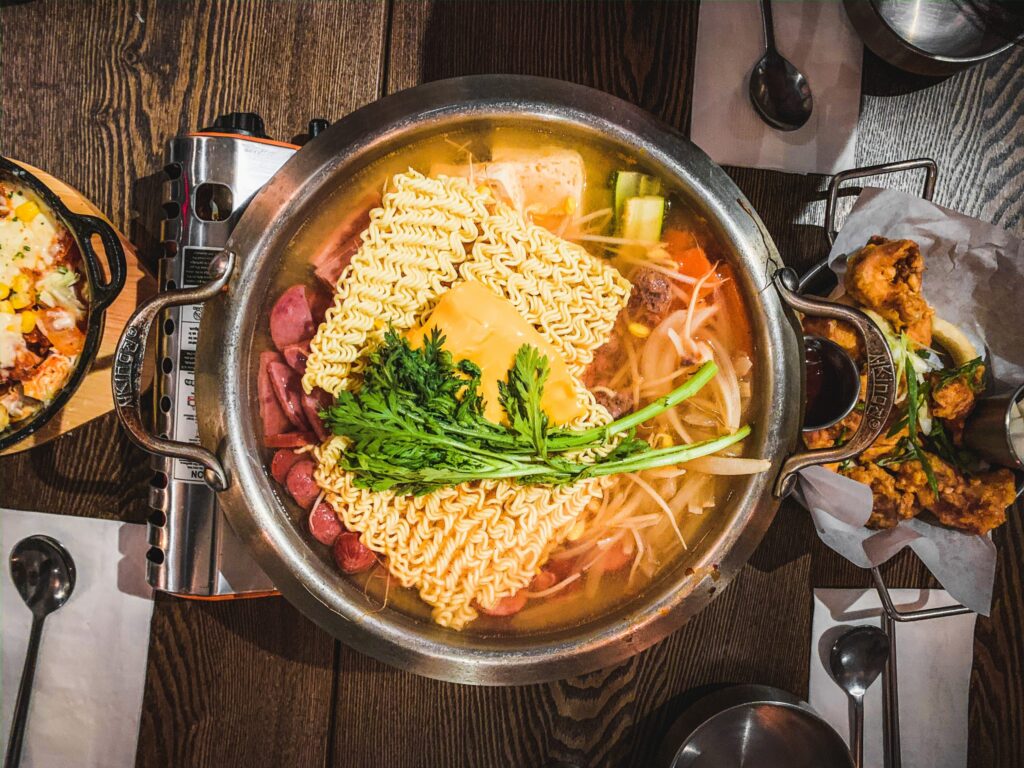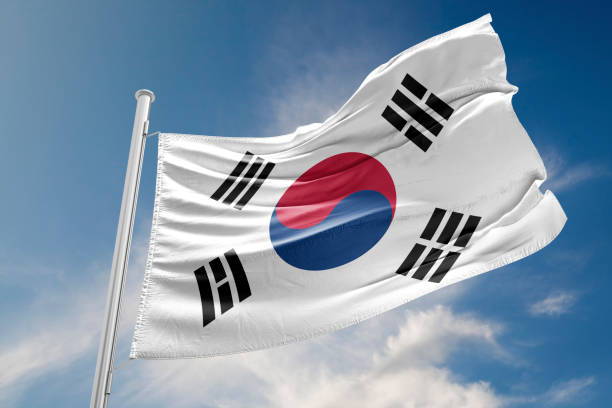Chinese cuisine is renowned for its diversity, flavors, and regional variations. With a rich culinary history that spans thousands of years, Chinese cuisine has influenced global gastronomy. Here’s an overview of Chinese cuisine:
1. Regional Diversity:
- Chinese cuisine is incredibly diverse, with different regions having their own distinct culinary styles and specialties. The main regional cuisines are Cantonese, Sichuan (Szechuan), Hunan, Shandong, Jiangsu, Zhejiang, Fujian, and Anhui, each offering unique flavors and cooking techniques.
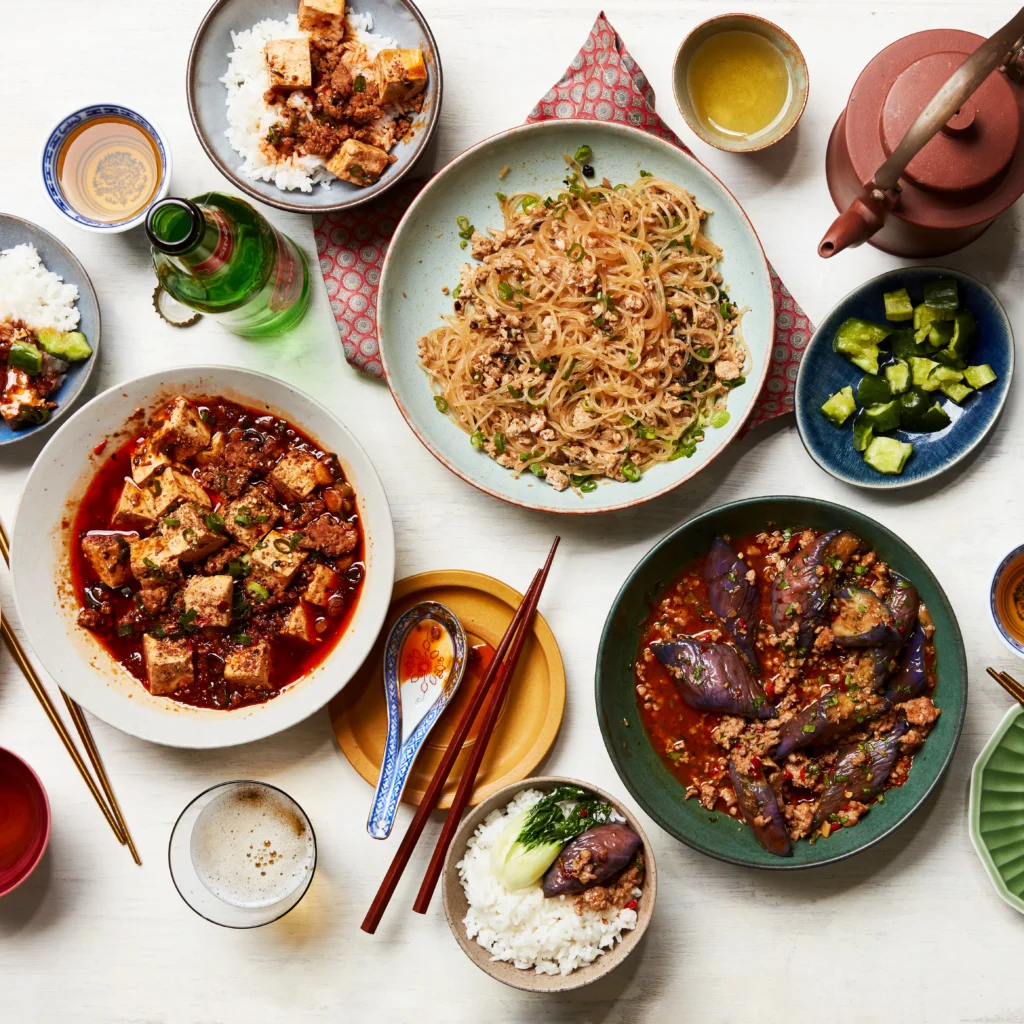
2. Key Ingredients:
- Chinese cuisine places emphasis on fresh and seasonal ingredients. Staple components include rice, noodles, tofu, vegetables, and a variety of meats such as pork, beef, chicken, and seafood. Chinese cuisine is also known for its use of aromatic spices and herbs.
3. Cooking Techniques:
- Chinese cooking involves a range of techniques, including stir-frying, steaming, deep-frying, boiling, braising, and roasting. The choice of cooking method depends on the ingredients and the desired flavor and texture.
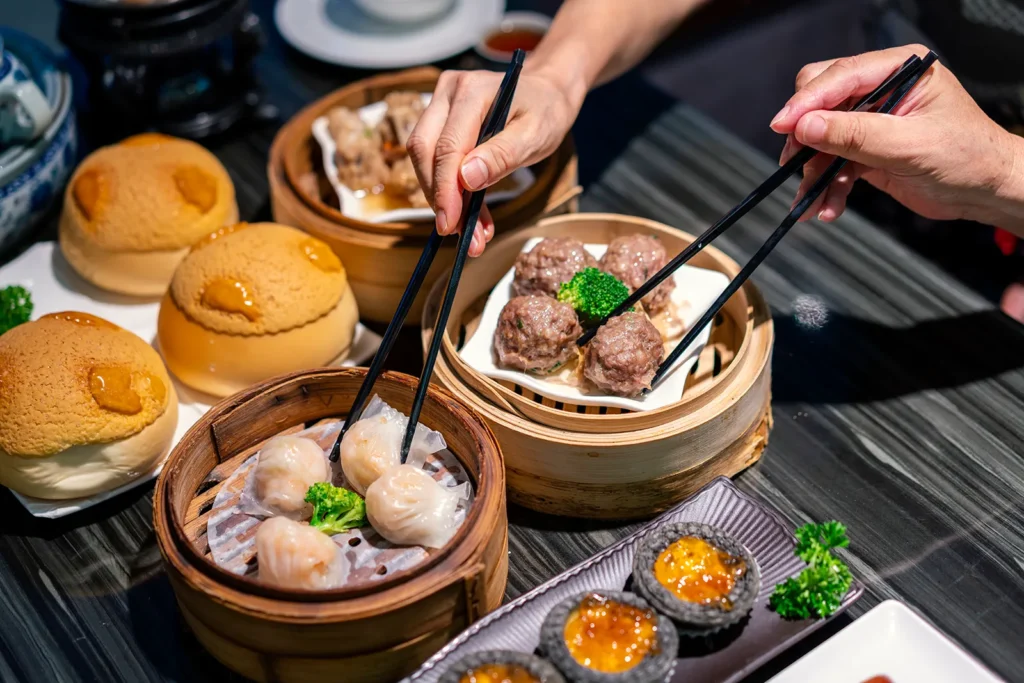
4. Dim Sum:
- Dim Sum is a style of Chinese cuisine that involves small, bite-sized portions of food served in small steamer baskets or on small plates. Dim Sum includes a variety of dumplings, buns, rolls, and other savory and sweet dishes.
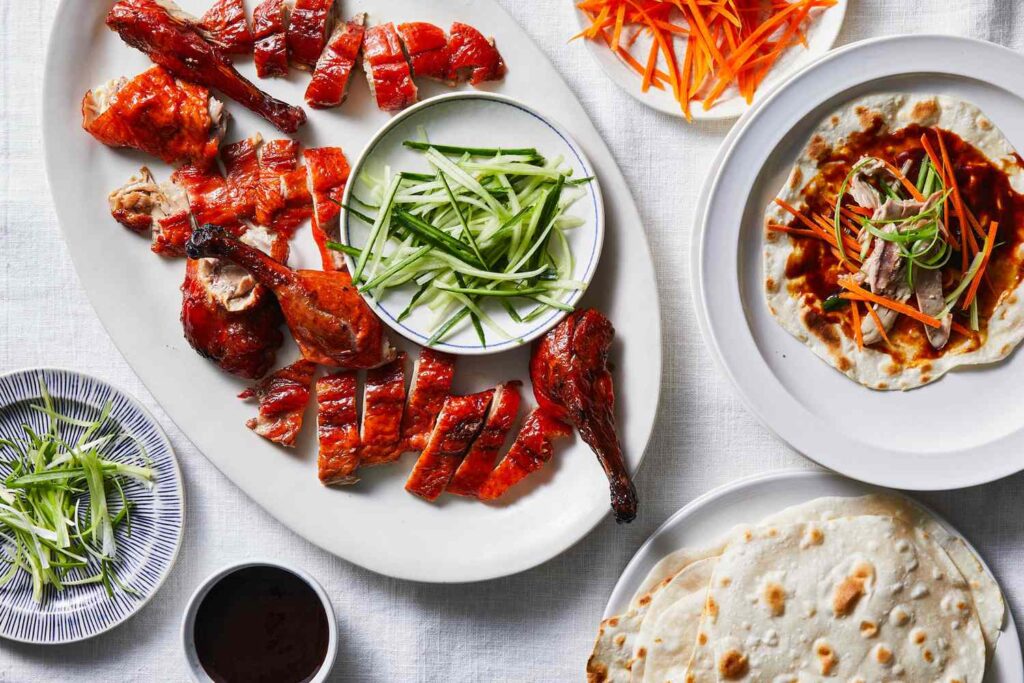
5. Peking Duck:
- Peking Duck is a famous dish from Beijing (formerly Peking). It involves roasting a duck until the skin is crispy and serving it with thin pancakes, hoisin sauce, and sliced scallions. The dish is known for its delicious combination of flavors and textures.
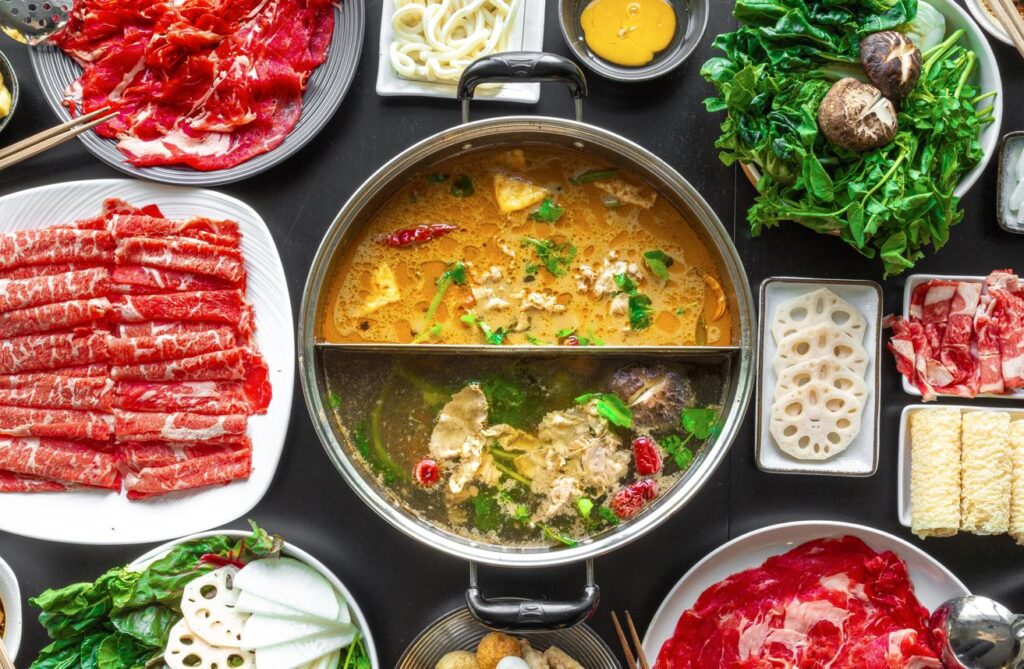
6. Hot Pot:
- Hot Pot is a communal dining experience where a simmering pot of flavored broth is placed at the center of the table. Diners cook a variety of raw ingredients, such as thinly sliced meat, vegetables, and noodles, in the hot broth.
7. Sichuan Cuisine:
- Sichuan cuisine, known for its bold and spicy flavors, incorporates ingredients like Sichuan peppercorns and chili peppers. Dishes such as Mapo Tofu and Kung Pao Chicken are popular examples of Sichuan cuisine.
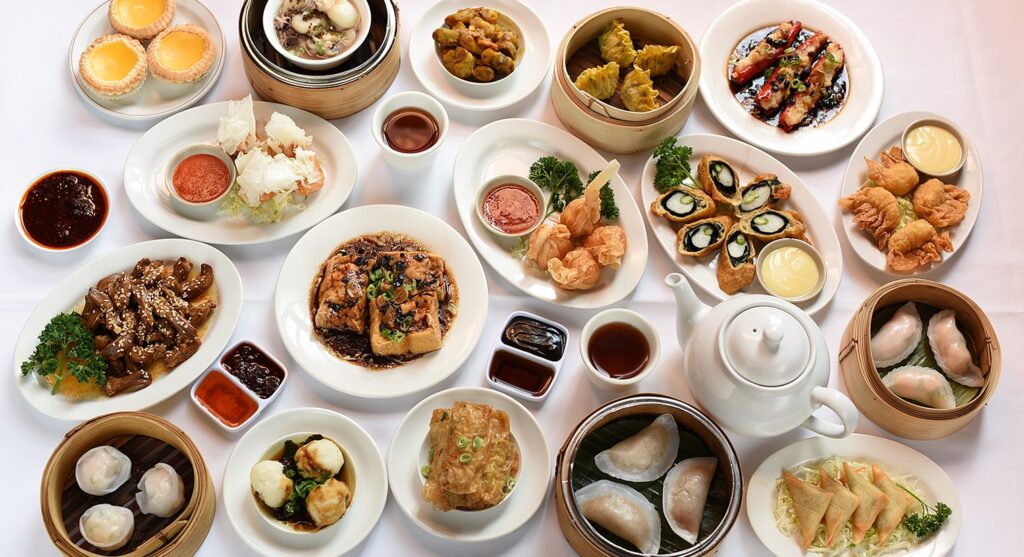
8. Cantonese Cuisine:
- Cantonese cuisine, originating from the Guangdong province, is characterized by fresh ingredients and a focus on natural flavors. Dim Sum, barbecued meats, and seafood dishes are prominent in Cantonese cuisine.
9. Noodles and Dumplings:
- Chinese noodles come in various shapes and sizes, and they are a staple in many regional cuisines. Dumplings, filled with meat, seafood, or vegetables, are also widely enjoyed, often steamed, boiled, or pan-fried.
10. Tea Culture: – Tea holds a special place in Chinese culture. Traditional tea ceremonies are an integral part of Chinese dining, and various types of tea are enjoyed to complement different dishes.
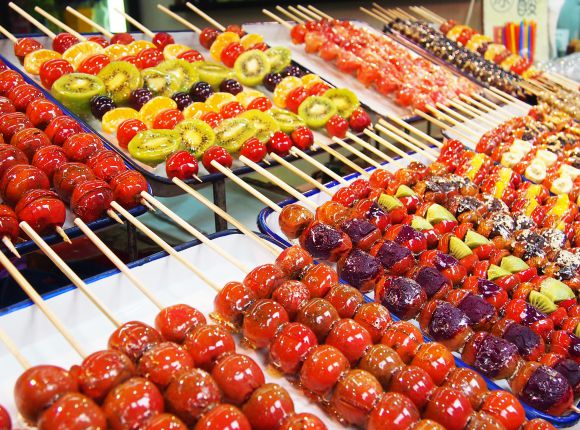
11. Street Food: – Chinese street food is diverse and offers a wide array of flavors. Popular street snacks include Jianbing (savory crepes), Tanghulu (candied fruits on skewers), and various types of baozi (steamed buns).
12. Balance and Harmony: – Traditional Chinese cuisine emphasizes the balance of flavors, colors, textures, and nutritional elements in each dish. The concept of yin and yang plays a role in creating a harmonious and well-rounded meal.
13. Fusion Cuisine: – In recent years, Chinese chefs have embraced fusion cuisine, blending traditional Chinese flavors with international influences. This has led to innovative and creative dishes that cater to a global palate.
Chinese cuisine’s broad range of flavors and techniques has made it a favorite worldwide. Whether you’re enjoying the comforting warmth of a bowl of noodles or the explosive spiciness of a Sichuan dish, Chinese cuisine offers a delightful culinary journey.
